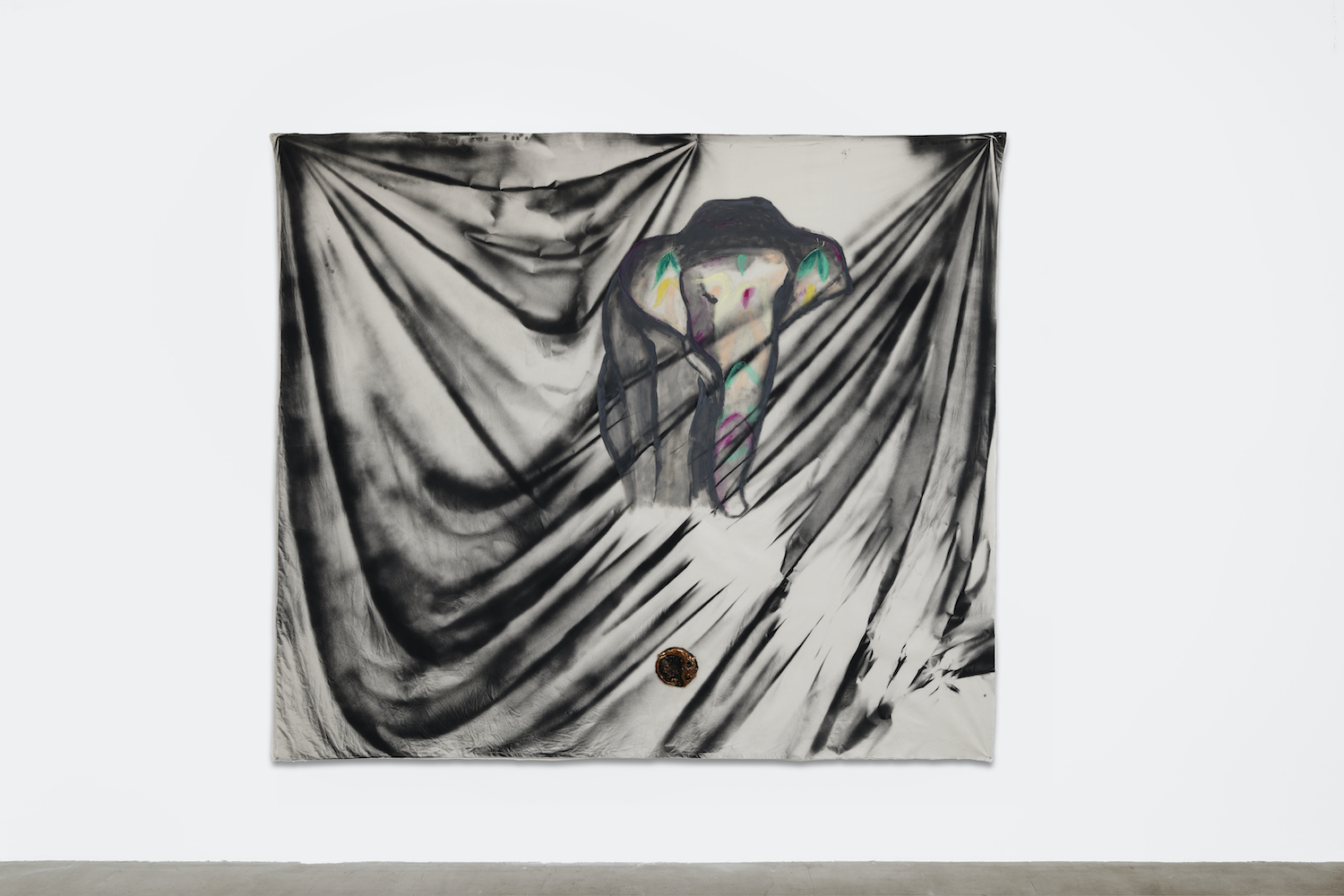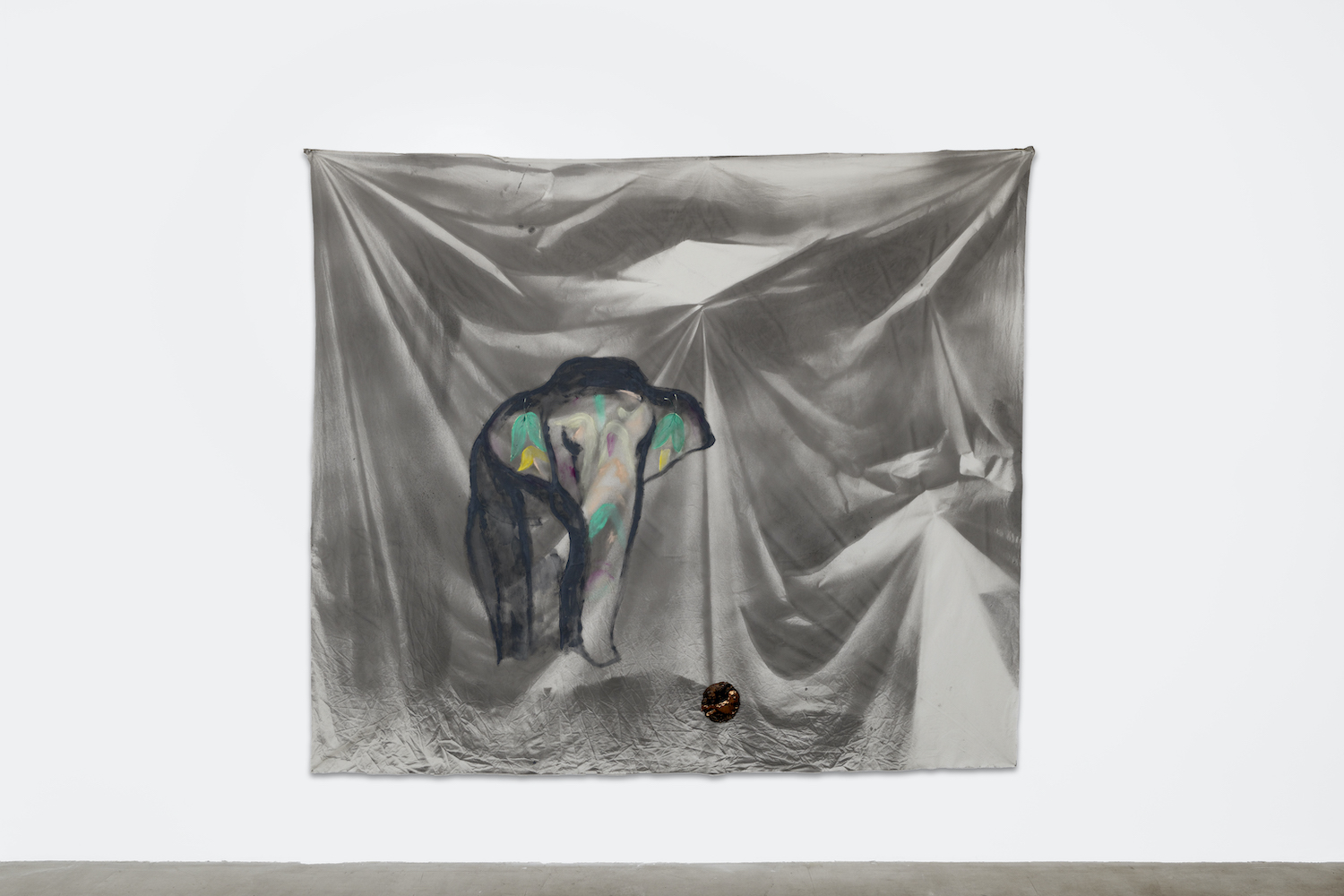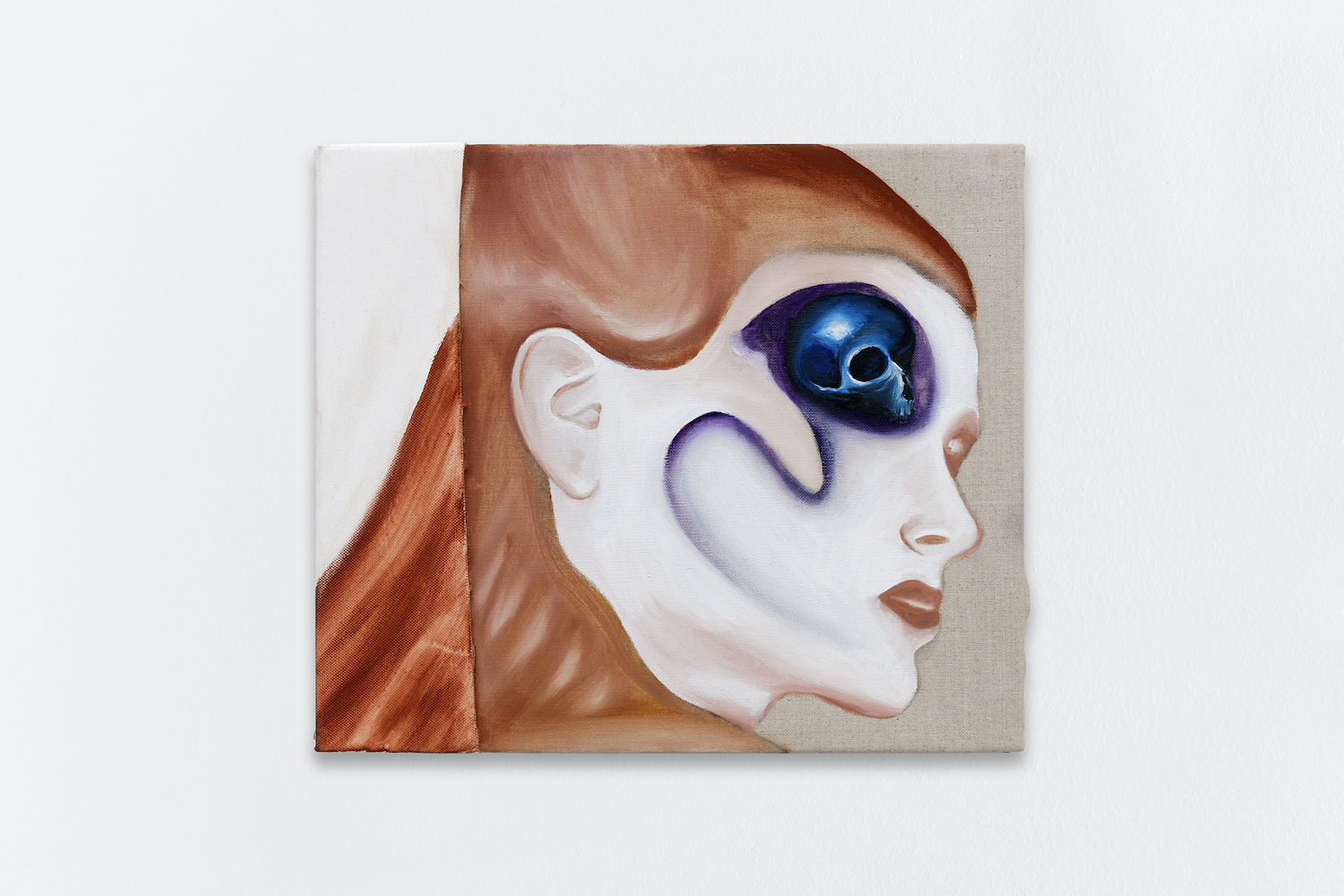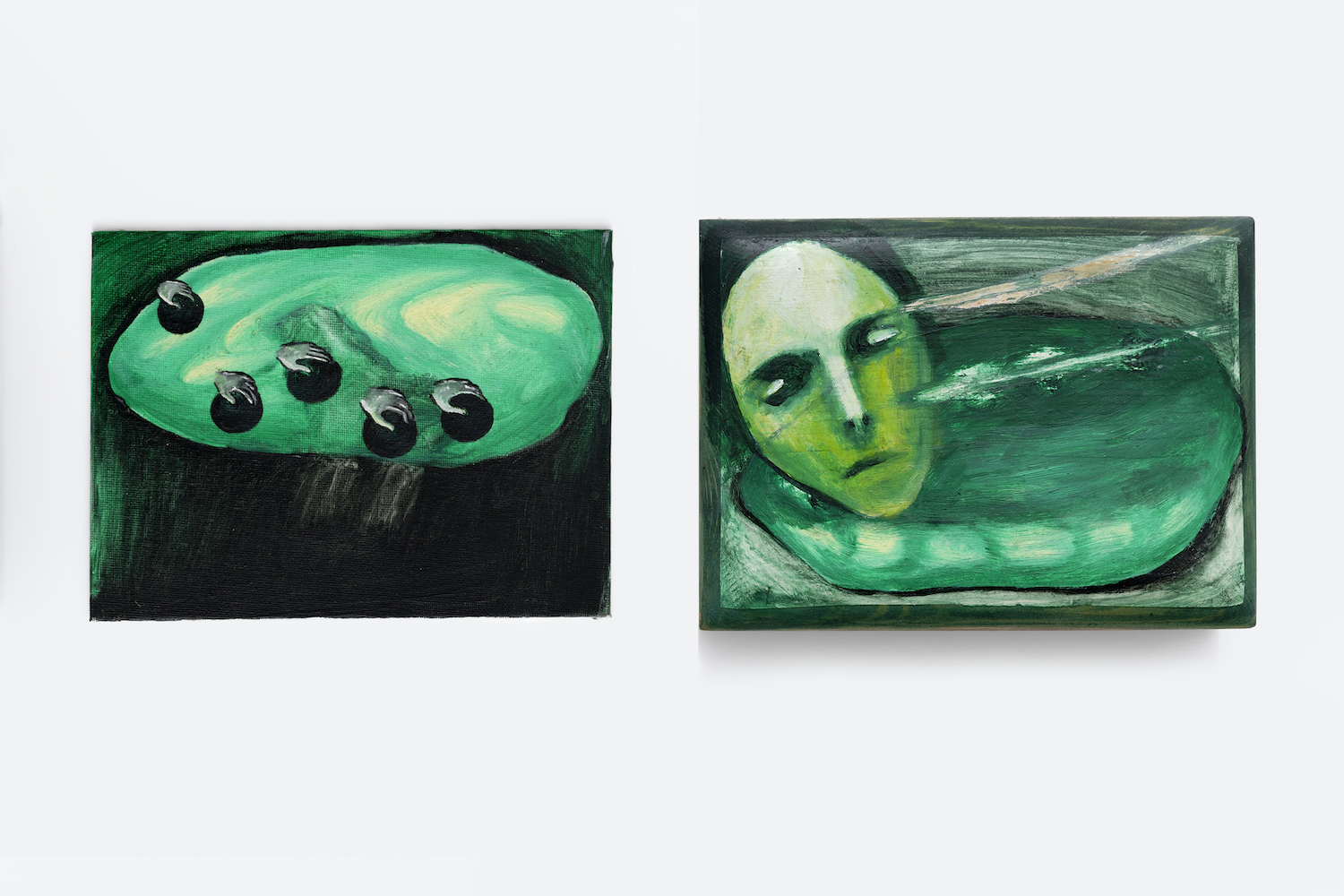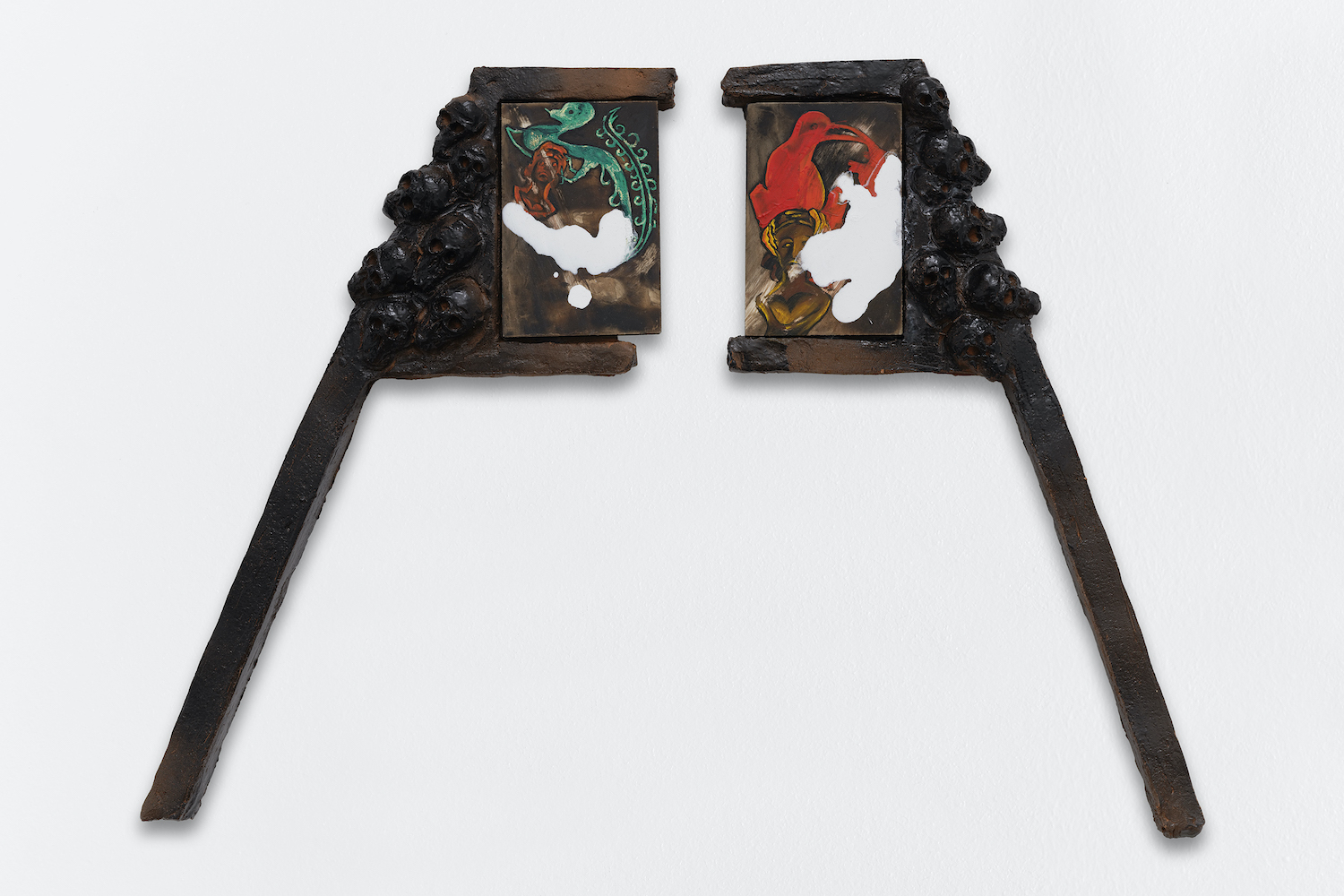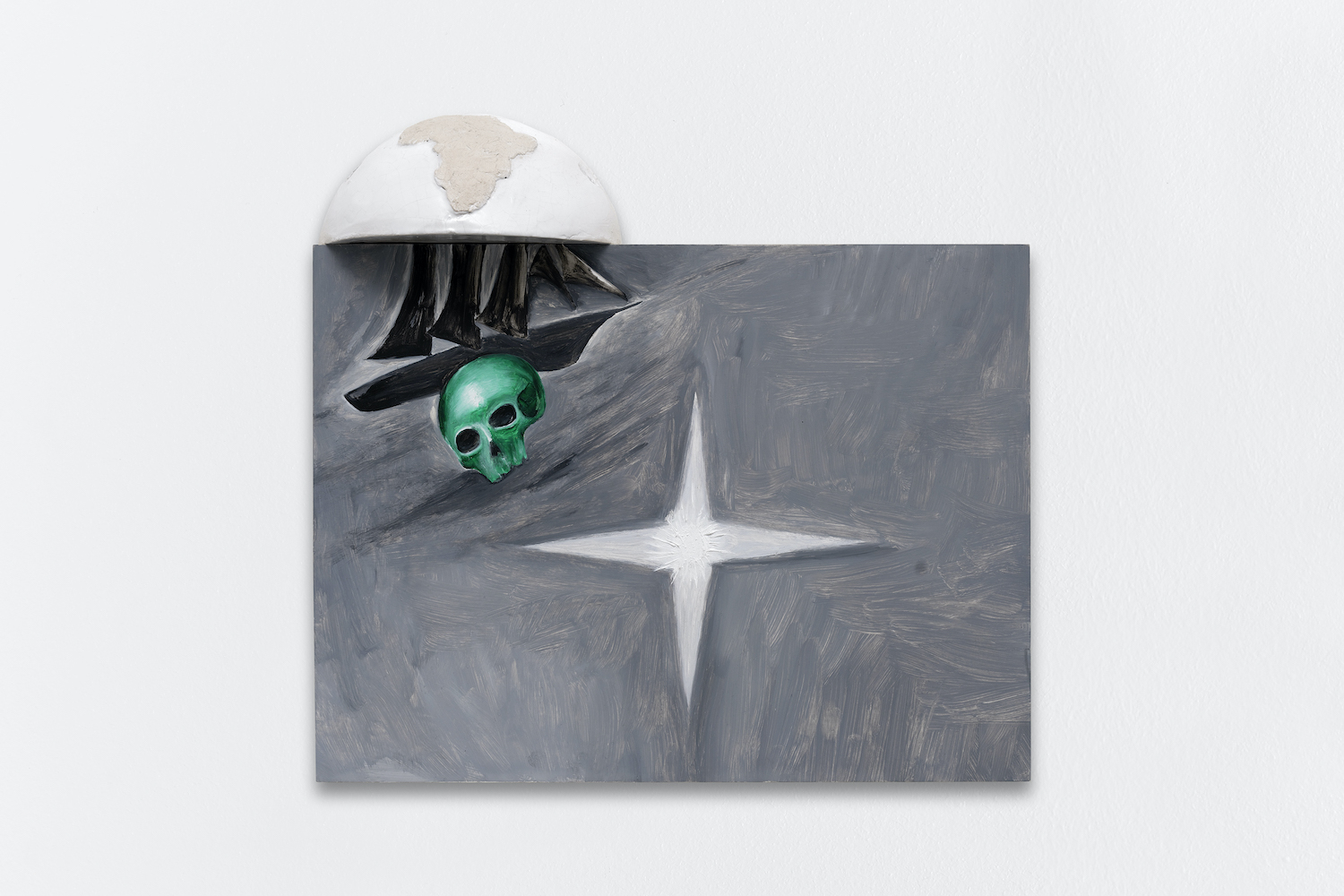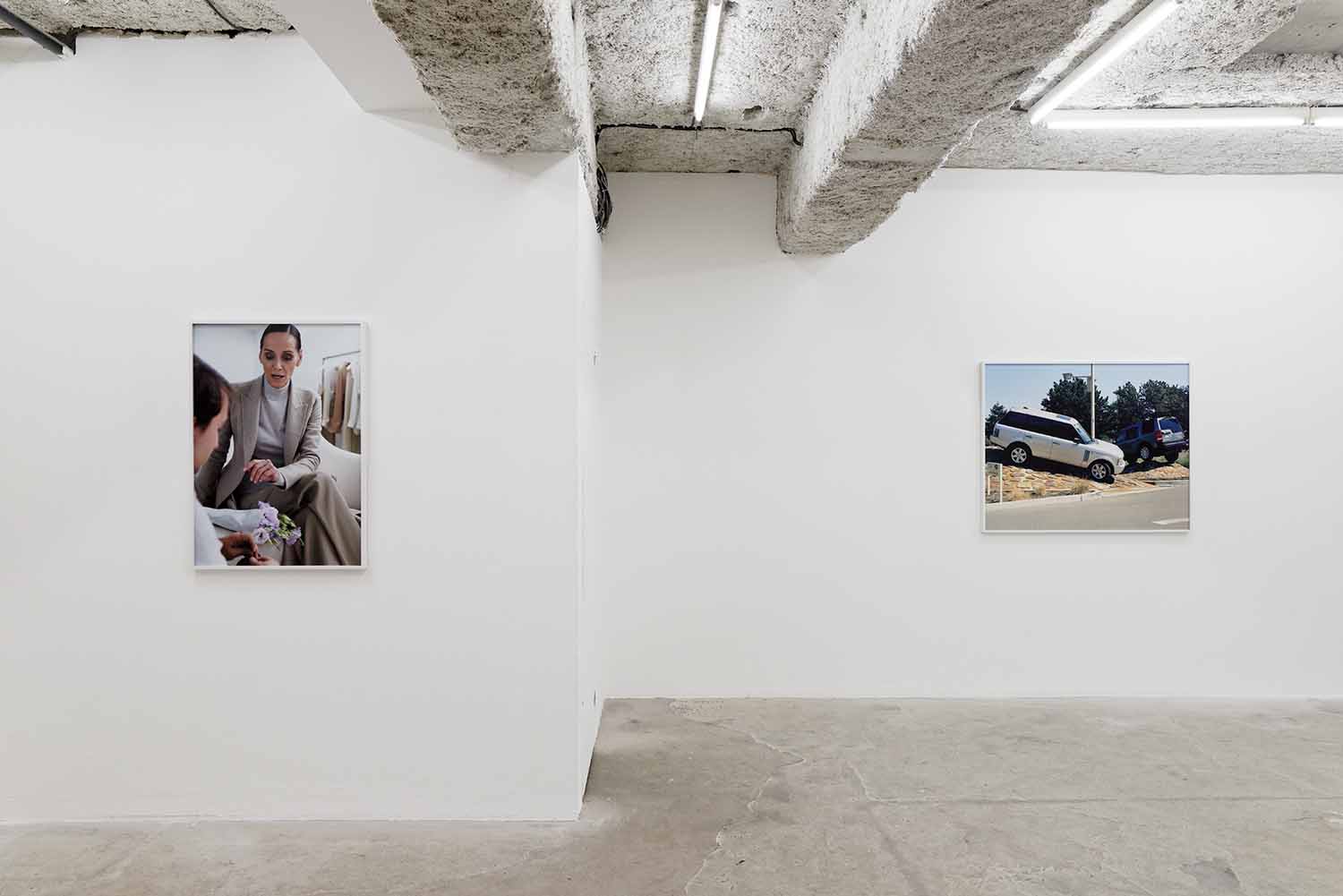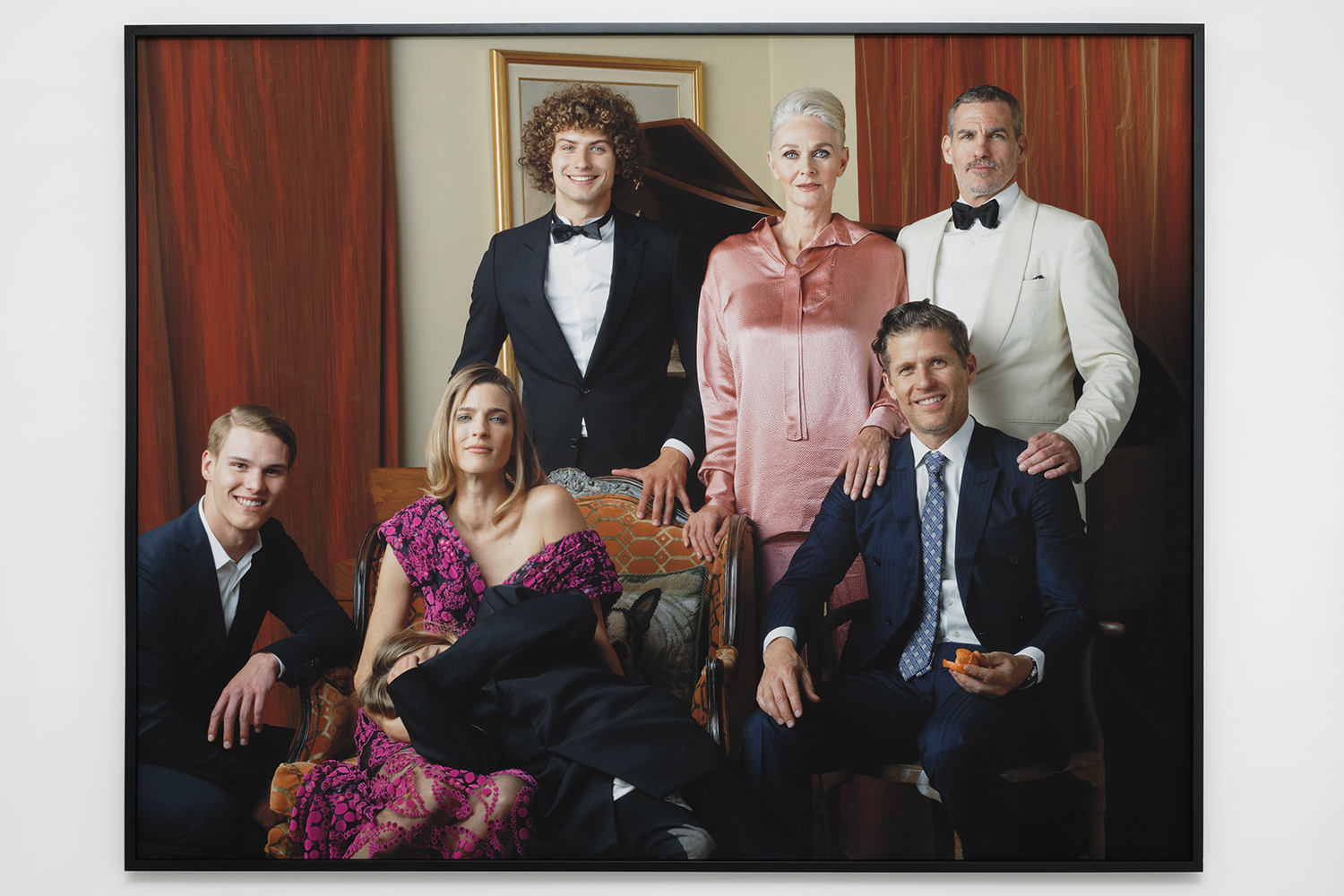Three canvases are installed on three adjoining walls at Balice Hertling gallery. Each unstretched canvas is draped on a wall, and each is painted with a depiction of draped fabric. The drapery, with its tie-dye-like folds and splattered colors, evokes a circus tent. The execution is not intended to impress us with technical magic, but to suggest the most glorious sense of freedom.
Within, you see an elephant. The elephant, like the drapery, is translucent. There is a halo effect. The colors recall the early visual effects of silent films. The elephant wears makeup. He’s definitely there for a show. Awaiting his turn, he reminds himself to raise his trunk and stand on two feet — just like his trainer told him.
The most he can do is stand on a ball and ride a bicycle. But this elephant is a painting; we expect him to speak — to tell us about the last book he read, or to express satisfaction about his green-yellow-purple makeup. To tell us how happy he is that Enzo Cucchi has painted him with such glory yet timidity. Or perhaps he prefers to first tell us a joke another circus animal told him.
He’ll speak of the other two elephants as well. The one with navy blue eyes, wide open and shut at the same time. Those who were domesticated alongside him. Maybe they don’t speak of their missing ivories anymore. The middle elephant, the one whose painting is darker and harsher, hates this discussion about tusks. To him, the past is worthless. Not because it’s a reminder of pain, but because pain no longer matters either. For a circus elephant, pain is just as internalized as an acrobatic routine. It has turned into a concept. Pain is forwarded to the past, even if present and future remain painful.
Why does the past in these paintings feel so fresh? How often it speaks of death. That glazed terra-cotta in the middle of the painting with the skull and the chameleon on it: that’s death. That terracotta represents utter courage. These drapes and terra-cottas could only have been painted by a painter who’s lived a lifetime as a painter — a lifetime of being faithful to the medium itself. The glazed ceramic is a fossil left to history by the painter. While he’s still alive. He wants to paint his own history with his own brush and he doesn’t trust the future. Maybe tomorrow he will make another history. For a painter like Cucchi, being fresh is not as hard as it is for us.


